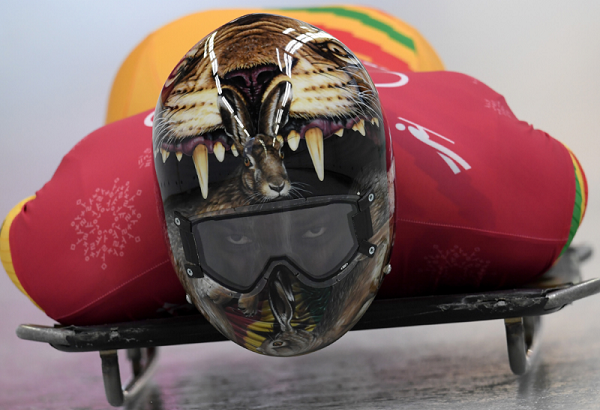
Akwasi Frimpong's race suit added to Olympic Museum
Ghana's lone-ranger at the 2018 Winter Olympics Akwasi Frimpong will be immortalised by the Olympic Movement after he donated his colourful competition suit to the Olympic Museum in Lausanne, Switzerland.
Akwasi Frimpong's predominantly yellow suit which has green and red stripes, as well as the Black Star of the Ghana flag, will join more than 10,000 other artefacts at the museum which holds the largest archive of Olympic Games mementoes in the world.
Advertisement
Frimpong, 32, in an interview, revealed that the day after he qualified for the Winter Games in Pyeongchang, South Korea, he received an email from the Olympic Museum in Lausanne, Switzerland, asking whether he would like to donate something to their collection.
Akwasi Frimpong disclosed that the Museum wanted his competition suit and his much-discussed helmet but he could not give up his helmet because the former was more representative of his country of birth, Ghana.
"I first wanted to donate a t-shirt and a sculpture, They preferred it, but I wanted to leave something that refers to Ghana, and the suit does that more than my helmet," Akwasi Frimpong said in an interview.

Akwasi Frimpong
Akwasi Frimpong who finished last in the men's skeleton competition during the Games, said he signed and donated the suit that he wore during the training sessions in Pyeongchang without washing them.
Born and raised in Kumasi, Ghana, Akwasi Frimpong moved to the Netherlands at the age of eight, where he lived as an illegal immigrant.
After overcoming much adversity, including injury and the task of mastering three different sports along the way, Frimpong's long-awaited dream finally became a reality when he made history as Ghana's first skeleton athlete at a Winter Olympics.
About the Olympic Museum
The Olympic Museum is one of Lausanne's prime tourist site draws, attracting more than 250,000 visitors each year.
The museum was founded on June 23, 1993, on the initiative of then-president of the IOC Juan Antonio Samaranch. Mexican architect Pedro Ramírez Vázquez, an International Olympic Committee member, and Jean-Pierre Cahen, were in charge of the project. The museum was named the European Museum of the Year in 1995.
After 23 months of renovation between 2012 and 2013, the Olympic Museum re-opened on 21 December 2013. During the transformations of the building, a temporary exhibition was set up in a boat (Helvétie) of the CGN, in front of the Olympic Park.
The permanent exhibition is organized into three major themes on three separate floors: Olympic World, Olympic Games, and Olympic Spirit. A visit begins on the third floor, where the Olympic World part of the exhibition informs visitors of the history of the ancient Olympic Games and the rebirth of the modern Games in the 19th century. Highlights include a display of Olympic torches, as well as a video documenting major moments in the history of opening ceremonies history.
The second floor focuses on Olympic Games. Sporting equipment for a variety of sports are on display, and visitors are introduced to the Youth Olympic Games and the Paralympic Games. More than 1,000 video clips of Olympic Games events and athletes are can be searched and viewed at individual viewing stations.
The final part of the permanent exhibit covers the Olympic Spirit, where visitors are made to feel part of an Olympic Village and can test their balance, agility, and mental skills with interactive exercises. Olympic medals are also on display.



